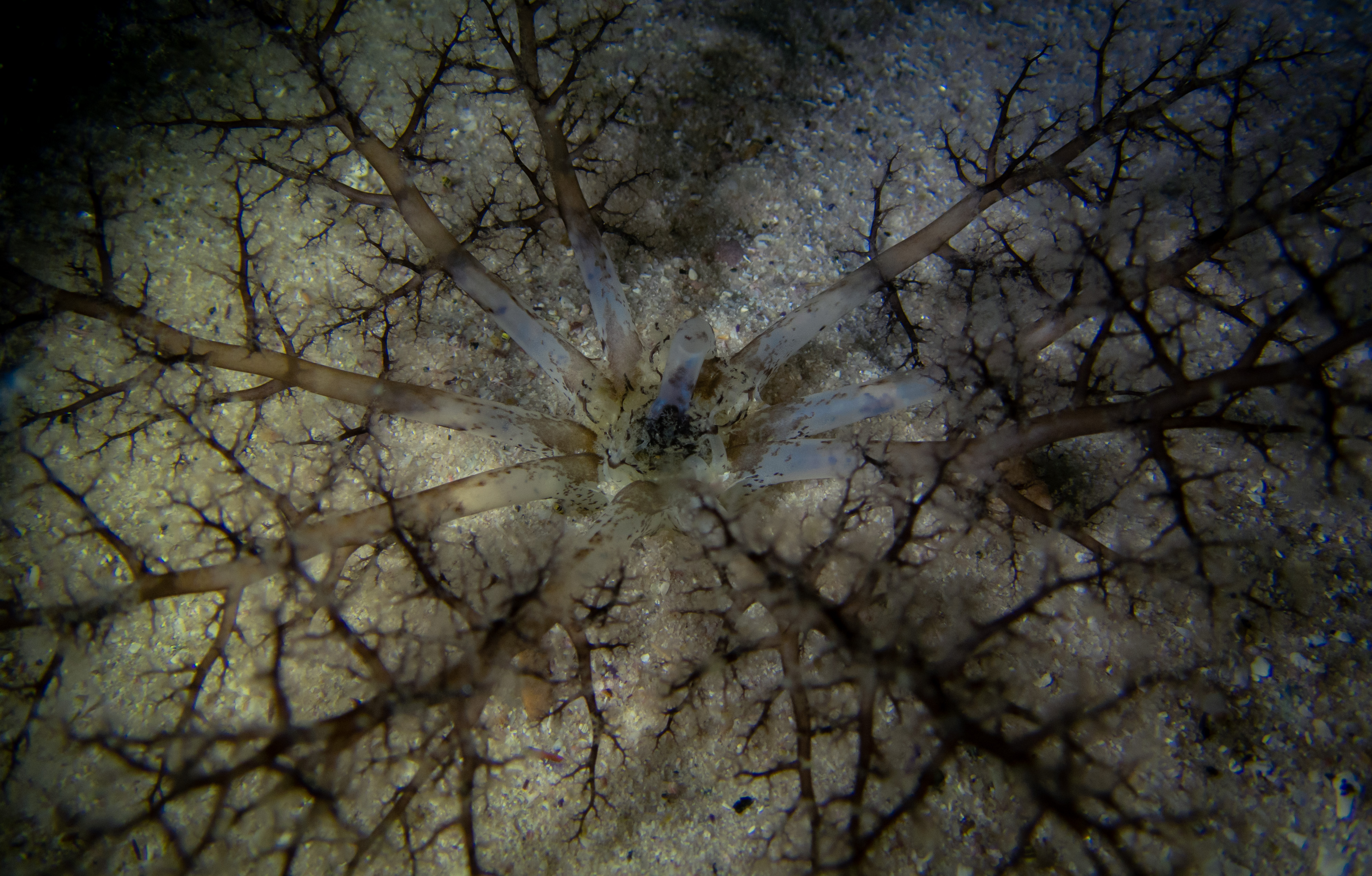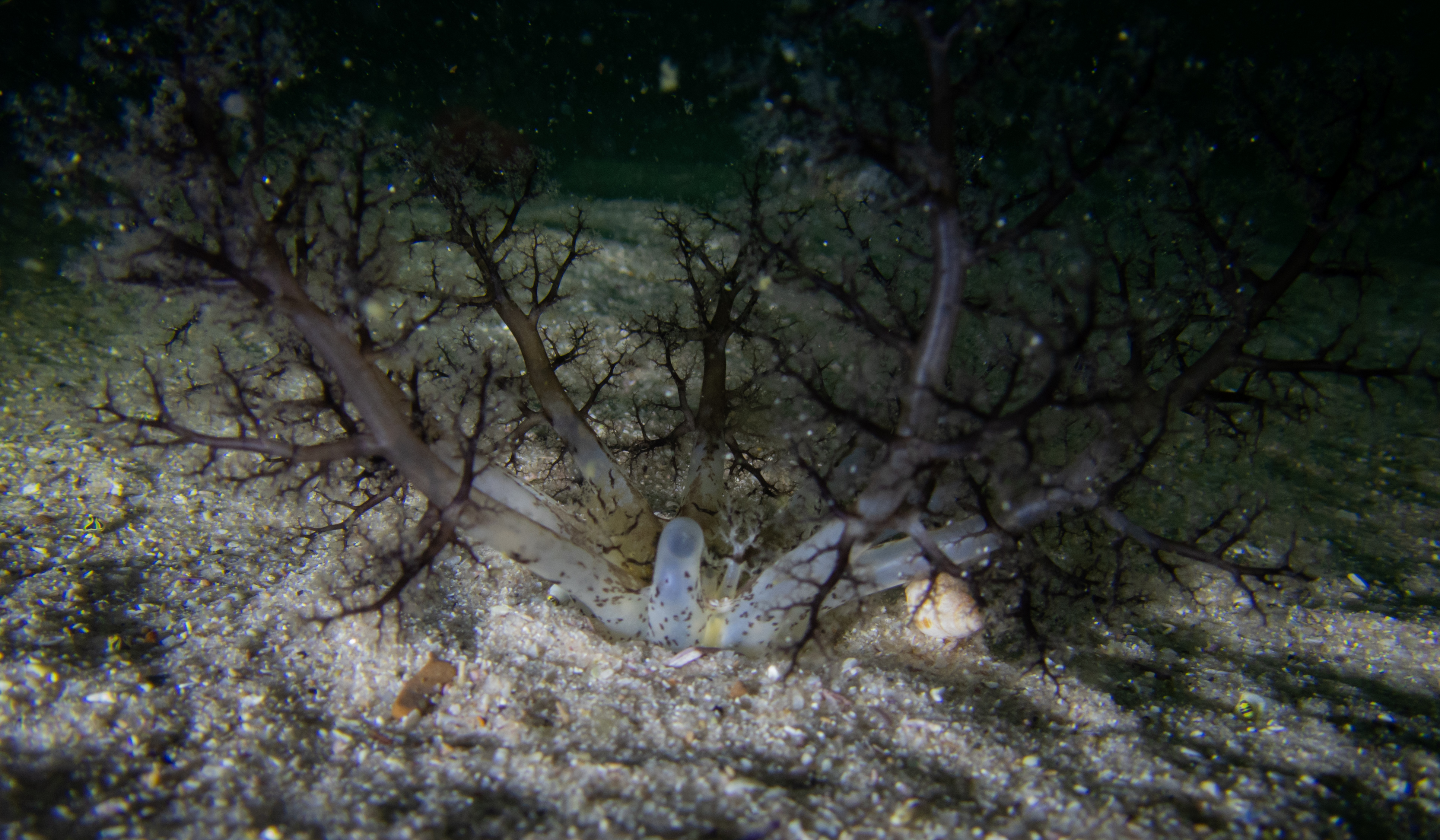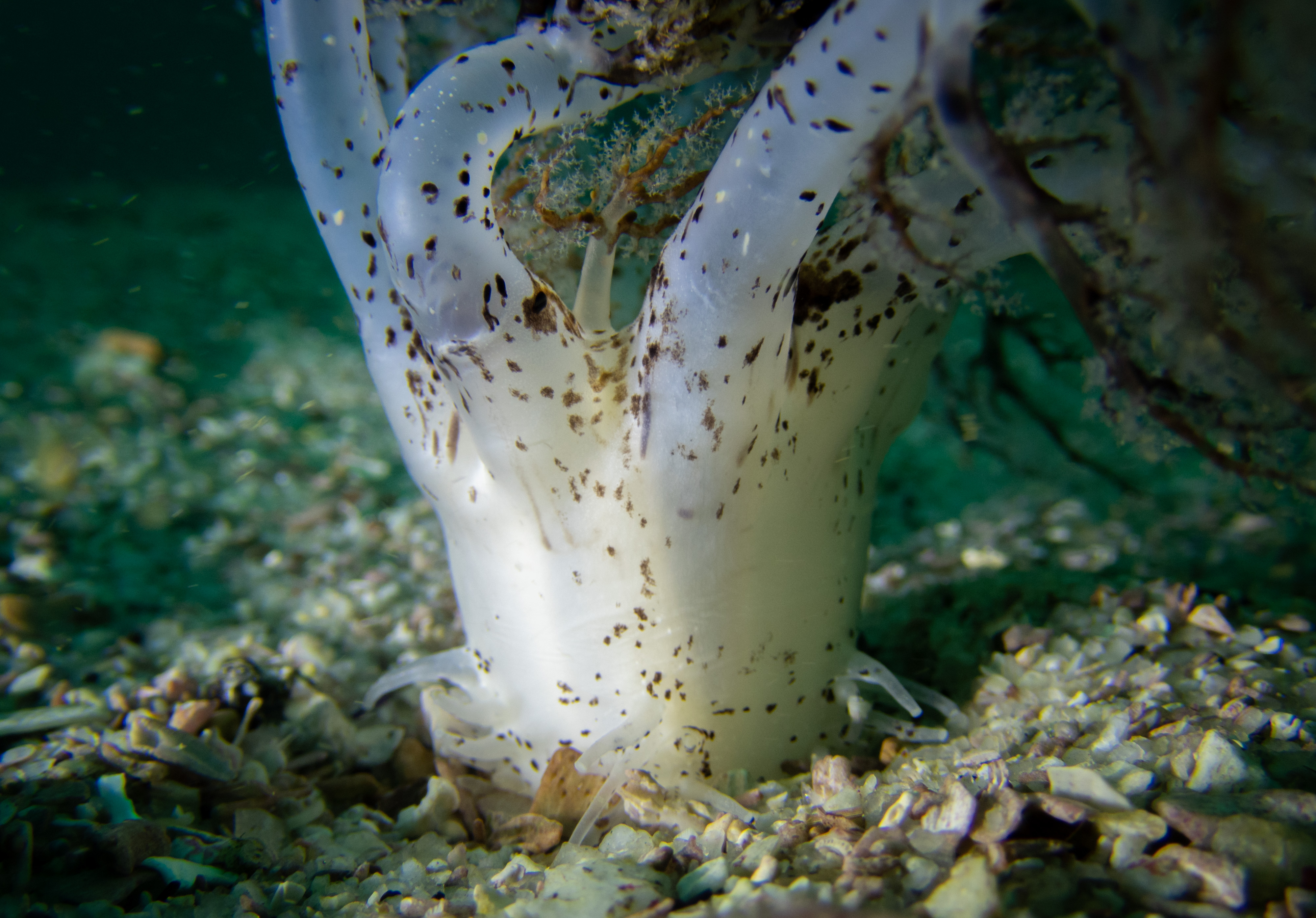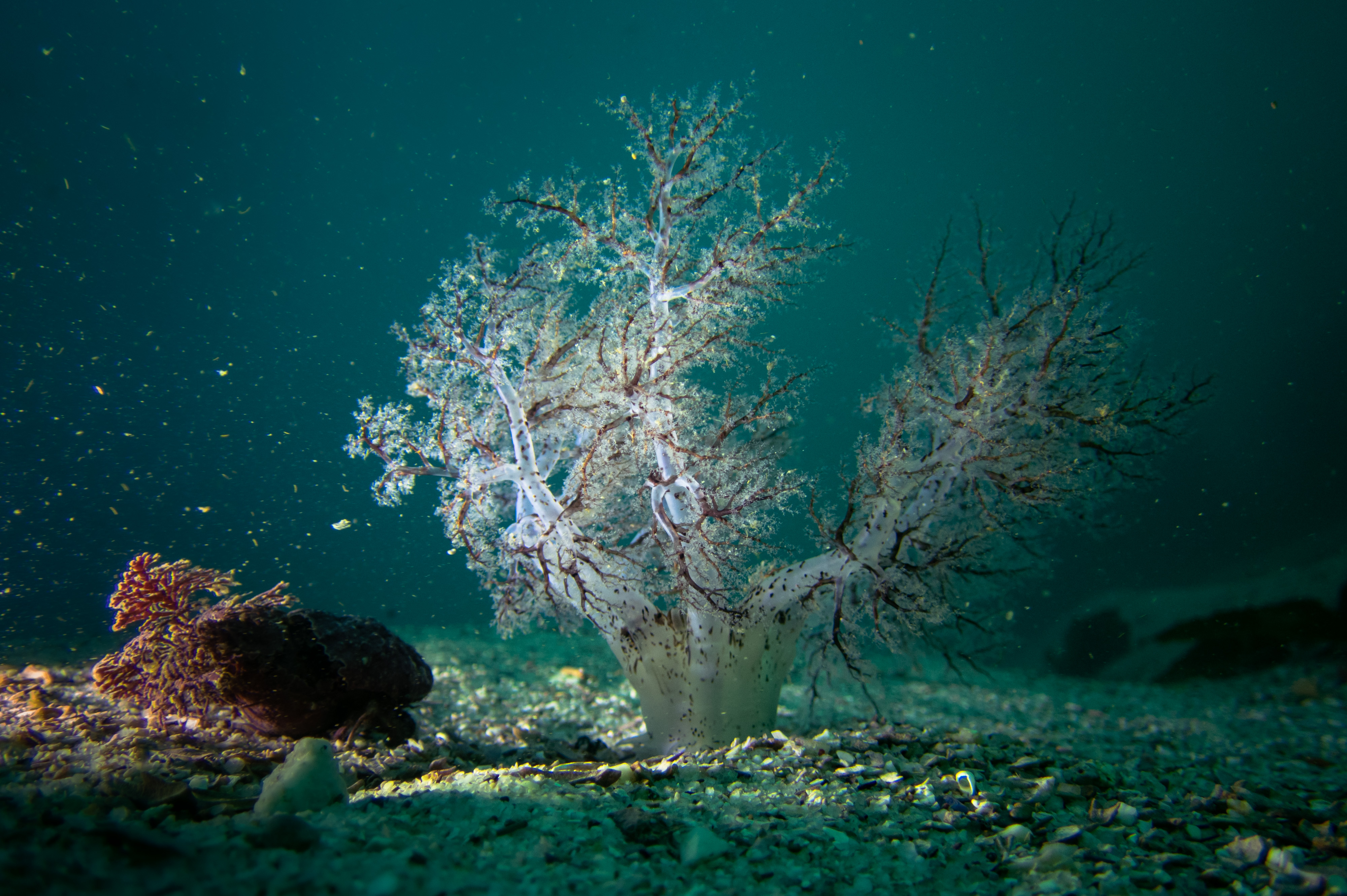One of the best discoveries so far
Jannes Landschoff
One of the best discoveries so far is a species we had been completely ignorant of! This might not come as a surprise. After all, the term “discovery” implies a certain novelty but to me seeing a “new” animal is without fail, the most amazing feeling I have ever had.
I remember it very clearly. It was one of those days where I had been bound to my desk for the whole day. I had missed the opportunity to go for a dive in the morning, and here I was, fighting my inner lack of energy to go out and explore. “Leave it today, go tomorrow”.
The Great African Seaforest hadn’t been too inviting for a few days. The water was cold and murky and even though I am trying to go every day, none of us is free of general human laziness. But my Natural History mentor always used to say: “Rausgehen lohnt sich immer!”. Translated from German this basically means something like it is always worth it to leave the house and explore in nature. Over the years, I morphed this term into my own version of “you never regret a dive!”.
So I somehow tricked my body off the comforts of the couch, telling it that when I would get home, there would be a nice hot shower, a warm blanket and good chocolate and tea. What also helped was that I called my friend and we decided to go together. I often find that sometimes in life we need that extra motivation from others even to do what we love.

So there we were, diving in a 13°C ocean with a disappearing late afternoon sun, and the water was green, full of particles. A mixture of zoo- and phytoplankton and their remains; organic matter of high nutrient value for all the filter feeders. It had been like this for days. Which diver would want to be in this? The answer would turn out to be: one who is curious about animals that specialise in filter feeding in this soup of nutrients!
Because of the conditions, I stayed close to the bottom to at least see something. And then suddenly, there it was: a comparatively large, ten-armed, half-buried, semi-translucent sea cucumber which I had never encountered before. Easily 30 cm long, but its body was buried in the sand. When you know an area well, you have an immediate intuition when you stumble upon something special.

The excitement started to flood me. Right in front of me, the cucumber spread its arms into the water column, which was, of course, saturated with its food. The wondrous creature held out its arms into the gentle current, and once each arm had caught enough particles, it would fold the arm over and stuff it into its mouth, using the smaller arms at the base of the mouth to sweep the food off and to clean the large arms. It looked like it was licking its fingers and lips off. I watched this animal and what it did for nearly my entire dive time, studying the pattern of when it would take which arm into its mouth and at what time.
Back home, the detective work was on. What was this extraordinary sea cucumber? I had never seen it in any ID books or guides before, and I could not find it anywhere now. It was so large! And although mostly buried, it was easily 30 cm in total length. How is an animal this size not depicted in any local field guide? I started checking the primary literature, but also had no luck.
Then I sent the pictures I took to Emeritus Professor Charles Griffiths, my former supervisor when I was a student and now our biodiversity champion in the 1001 project. In his 50-year career as a marine biologist working in Cape Town, he had neither seen this animal nor had he heard or read about it. I had suspected this. For the next two weeks, we skimmed all resources we could find, I was about to “give up” and send the pictures to an expert in this group to get better advice.

But then I found it.
Massinium athroprocessum, comparatively recently described in 1989 from False Bay, based on only two specimens collected! The original description was under a different name, which is also why it took me a while to find it in the literature. I was very pleased to find out it had been described already. Having a description and a name for an animal is so important. Names matter a lot because without knowing what an animal is, we humans fail to relate to it. We lack good taxonomic knowledge for most species as our marine biodiversity information in South Africa is generally outdated and incomplete. I am grateful for the excellent taxonomic work of Ahmed Thandar, our South African expert on sea cucumbers, who did an excellent job describing this beautiful animal.

Massinium arthroprocessum still lacks a common name. I call it the Tree-of-life sea cucumber. I felt so excited, connected, and in awe when I found this amazing creature. Incredible that it had always been there, and we had dived over it for all those years. You never regret a dive!
I believe I could be the first person who has ever seen this animal alive, or at least acknowledged and recognized it for what it is, but also its uniqueness and beauty. Now we know where it lives, and what it does. It only occurs in South Africa! We can talk about it and show the amazing animal to the world to increase the profile and protection of our mutual home – the Great African Seaforest.
footnotes
Photographs by Jannes Landschoff.